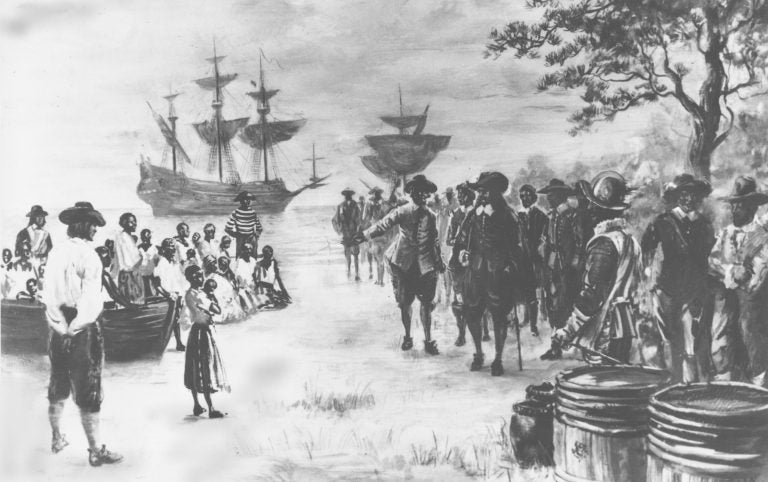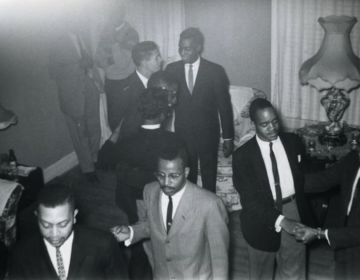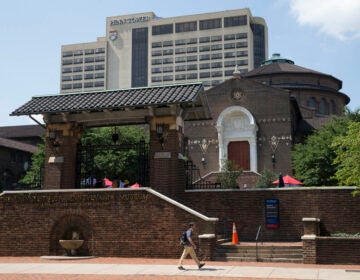Point Comfort’s legacy: Slavery and scars, but also strength that builds from pushing back
When you’re always pushing against the weight of oppression, it’s like your soul is pumping iron. The heavier the weight, the stronger your spirit gets.
Listen 2:31
This painting by Sidney King depicts Virginia in 1619 as a Dutch frigate docks at Point Comfort bringing 20 African slaves to be traded to the settlers for food. (AP Photo)
In August 1619, English pirates landed at Point Comfort, Virginia with more than 20 Africans they’d taken captive from a Portuguese slave ship. The pirates traded the Africans for food, and thus began the African slave trade in what would later become the United States.
So 400 years of discomfort began at Point Comfort. Four hundred years of atrocities began with a group of people who were stolen not once, but twice. Four hundred years of injustice began before America even became a country.
And while slavery ended less than 250 years after that moment, it was followed by lynching and Jim Crow, by discrimination and systemic racism, by an entire society set up to ensure that black folks would never rise above their position of servitude.
Along the way, something strange happened. The hardships that were heaped on us sometimes weighed us down, but more often they built us up. That’s because when you’re always pushing against the weight of oppression, it’s like your soul is pumping iron. And the heavier the weight gets, the stronger your spirit gets.
The weight of American racism was meant to weaken us, but repeatedly lifting that weight gave muscle to our character. Repeatedly lifting that weight made us stronger than others. Repeatedly lifting that weight made us dig into our souls until we found the strength to go on.
They lynched us, and we went on. They shot us, and we went on. They separated our families, and we went on.
And because we had the nerve to go on, we have achieved as a people. We’ve had black astronauts and black scientists, black doctors and black lawyers, black businesses and a black president, and we’re not done yet.
To be sure, we face challenges even now, and 400 years after we arrived, our communities bear the scars of slavery and racism. But scars come from wounds that have healed, and while it might feel like we’re still bleeding, while it might feel like we’re on life support, while it might feel like we are still in chains at Point Comfort, our scars are signs of our healing.
On this 400th anniversary, I need my people to know that we must take heart, even in the midst of our difficulties. Take heart and know that while we still have a long way to go, we’re healing. Stand up and know that while there are those trying to hold us back, we’re healing. Look up and know that while the journey has been long, we’re healing.
Yes, we have scars, but those scars are there to remind us of where we’ve been, and to let the world know that even after 400 years, we aren’t finished yet.
WHYY is your source for fact-based, in-depth journalism and information. As a nonprofit organization, we rely on financial support from readers like you. Please give today.





